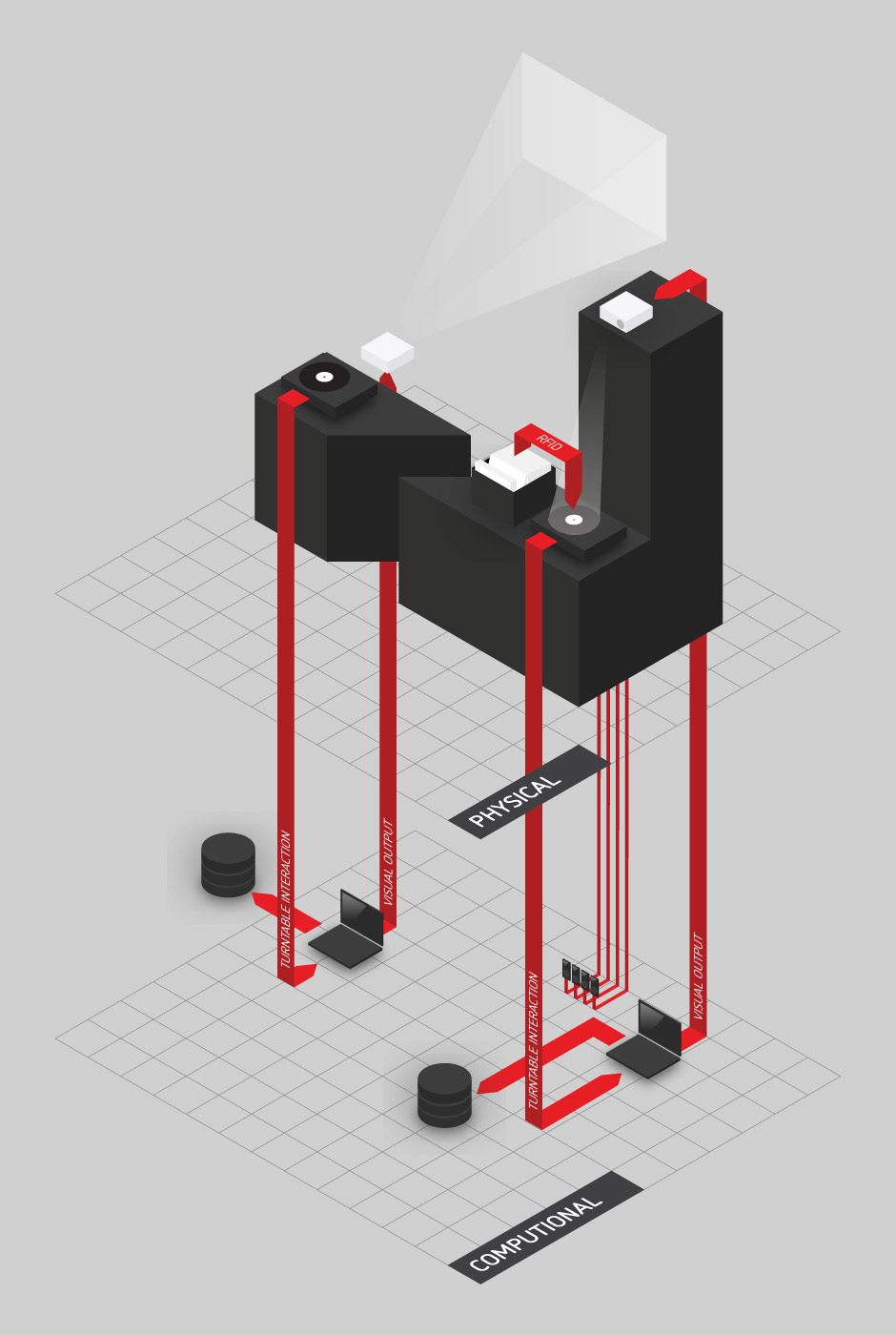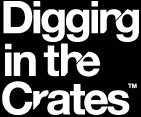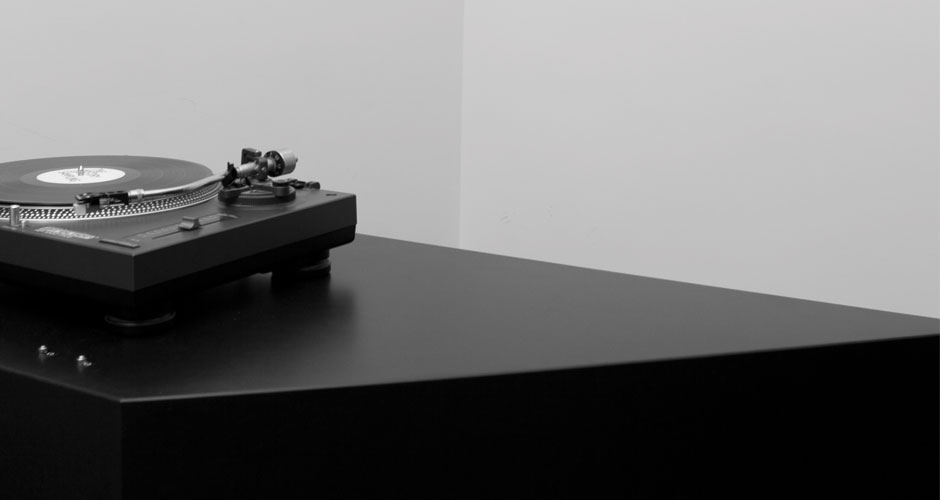 Photos by Sebastian Buehler
Photos by Sebastian Buehler
Choose one of 50 old records
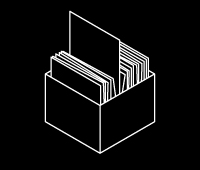
Visitors can choose from 50 old records of the 70s and 80s. All of these records contain one or more samples, which can be analyzed in the following.
Put the record on the Turntable
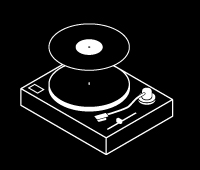
To analyze the samples to the record must first be placed on the turntable. A projection onto the record itself shows included samples as shaded areas.
Switch between two modes
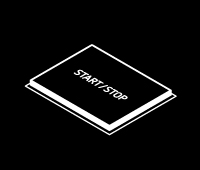
The old records can either be played or analyzed. To choose between these two modes, the on / off switch of the turntable is pressed.
Analyse more than 150 samples
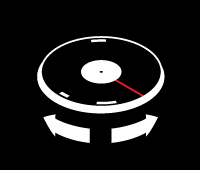
A modified turntable as an tangible interface is used to navigate and anaylze each single sample on the launched record.
Exhibition Overview
The pillar provides static information and is the drop-in center for new visitors. In addition to information in the form of text and information graphics on various topics related to sampling the visitor will find a variety of audio jacks, which contributions audio for a better understanding.
Meanwhile two interactive applications are used to navigate dynamically processed information. To find samples on old records the visitors use a converted record player, which communicates with a database and provides content via a projection onto the record itself. Another record is used for navigation through the history of sampling. In addition to text-based content media contributions in the form of video and audio can be reached.
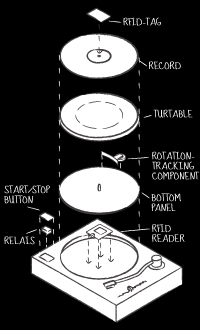
Interactive Components
Two interactive applications offer the possibility to visualize dynamically processed data which could be navigated by the visitors using modified turntables as new interfaces.
To find more than 150 samples on old records of the 70s and 80s, the user selects one of 50 RFID tagged vinyls from a special crate and puts them on the corresponding record player. This record player has the ability to read the RFID tag. In addition it is possible to get information of the current rotation of the turntable and its state (on / off). An Adobe Air application has access to an SQLite database and visualizes proper information which then gets projected onto the surface of the launched record using a mirror. By this tangible user interface, the user is now able to play the old originals, analyze the samples and discover new productions.
The user can move the time window in the history of sampling analogous to the spinning of a record for- and backwards by using another turntable as an interface. At the same time an Adobe Air application, which has access to a SQLite database, provides information in form of texts as well as video- and audio-based contents. The visualization is performed on a wall opposite to the user by means of a projection.
